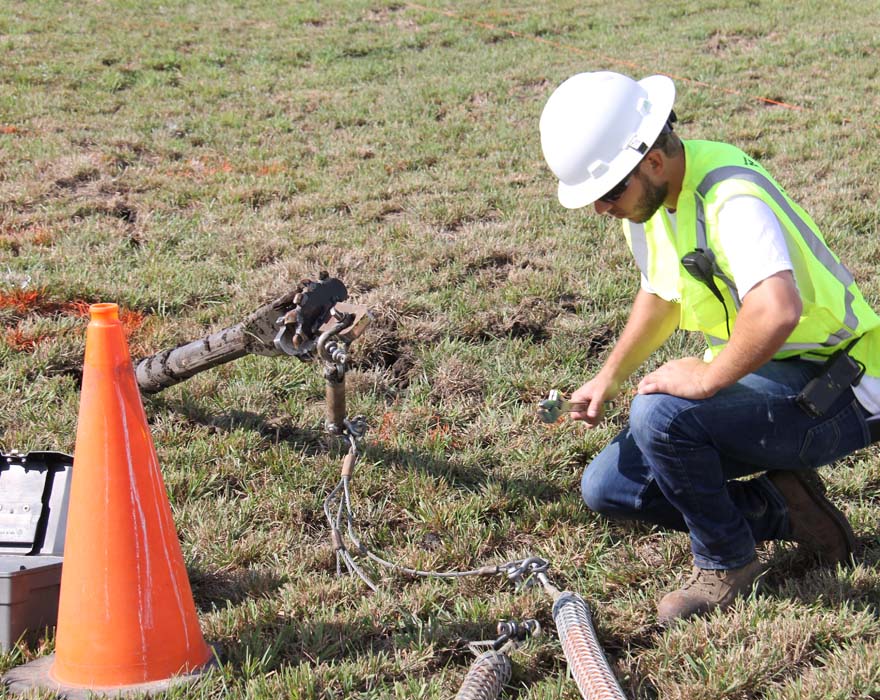Calculating reamer pullback drill rates
Operating a horizontal directional drill (HDD) is a bit of an art, but it takes science to help be successful. Science is at the heart of the drilling fluid that runs through the drill string, helping with downhole stability while cooling and lubricating tooling, as well as helping extract drill cuttings.
This series, “Making sense of HDD drilling,” will help you and your crew be successful on the job. The first post of the series, Why drilling fluid is essential to the HDD and the mixing process, explained why drilling fluid is important, how to measure fluid viscosity and the mixing process.
This article will walk you through how to calculate reamer pullback drill rates, a critical component to determining how much drilling fluid you will need to help have a successful bore.
Determining fluid amount needed
The volume of fluid you should use depends on hole diameter and soil conditions. Vermeer recommends the following for HDD rigs up to 100,000 lb (444.8 kN). (Remember, the reamer is 1.5 times the size of your product up to 9 inches [22.9 cm]. For product 10 inches [25.4 cm] and larger, the reamer is 1.3 times larger.)
Next, you will need to calculate the soil safety factor by determining the ratio of fluid pumped to soil conditions.
Armed with the information from these charts, as well as your drill rod length and your drill rig’s pump output, you can now
calculate the reamer pullback drill rate.



For example, if you were going to use a Vermeer D20x22 S3 Navigator® horizontal directional drill to do a 300’ (91.4 m) bore in sandy clay and pull back a 4” (10.2 cm) gas line behind a 6” [15.2 cm] reamer, you should be using around 44 gal (166.6 L) of fluid per rod (1.47 gal/ft [18.26 L/min] x 10’ [3 m] x 3 divided by 25 gpm [94.6 L/min] = 1.76 min/rod x 25 gpm [94.6 L/min] = 44 gal [166.6 L]). Each rod is 10’ (3 m) long, so you will use 30 rods for the job, which means you’ll need approximately 1320 gal (4996.7 L) of fluid for the project.
Performing this calculation before a project begins will help with the estimating and planning process.
Crews can sometimes try to get by with less fluid than what is truly needed. This practice can cause drillers to outrun their drilling fluid. This means your fluid-to-soil ratio is too great and becomes too thick to pump out of the exit/entrance pit. The result of the pudding effect can be an inadvertent return due to lack of flow underground. The ground can heave, product being installed can stretch and tooling can be damaged. Your tooling could also potentially get stuck underground.
Using too much fluid or product is wasteful and can create excess cost. However, don’t assume that inadvertent returns are always the result of using too little fluid. Inadvertent returns can also be caused by using the wrong type or amount of fluid additives.
By calculating reamer pullback drill rates, you can help make sure you’re using the right amount of fluids on every job. If you have any questions, be sure to contact your local Vermeer dealer.
Up next
In part three of this series, you will learn about different types of drilling fluid additives.
Vermeer Corporation reserves the right to make changes in product engineering, design and specifications; add improvements; or discontinue manufacturing or distribution at any time without notice or obligation.
Vermeer, the Vermeer logo and Navigator are trademarks of Vermeer Manufacturing Company in the U.S. and/or other countries. Mincon is a registered trademark of the Mincon Group plc.
© 2019 Vermeer Corporation. All Rights Reserved.

